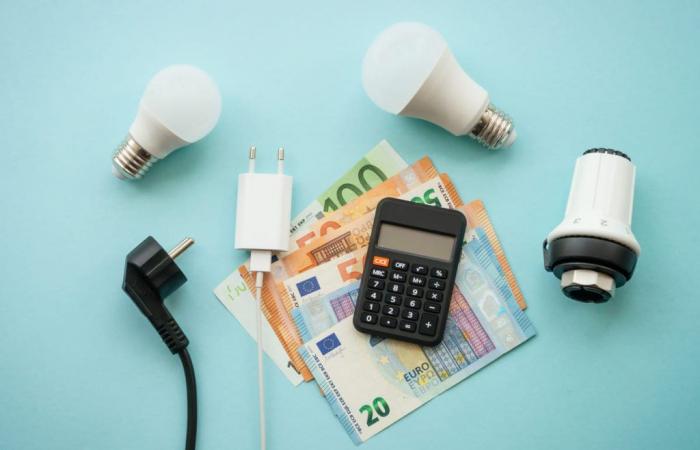From today Monday 1st July 2024 there is the end of the protected market for them electricity billsand so we move on to free market. As we have already learned with gas bills, today there is a stop to the Greater Protection Service, i.e. that type of market whose prices were regulated by ARERA (Regulation Authority for Energy, Networks and the Environment), with the precise aim of avoiding fluctuations in tariffs that could be excessive for consumers. This measure concerns 3.7 million customers.
From this moment on, the Free Market comes into play, which is a service that allows the consumer to choose their supplier based on the type of tariff offered: the supplier will decide the prices. The main advantage of the free market concerns flexibility, while the disadvantage lies in the fear of suffering a sudden increase in prices.
But what happens to consumers from today? In this short guide, we answer the most important questions regarding this market transition, in order to find out if the obligation applies to everyone and what the Gradual Protection Service is.
End of protected market: who will move to the free market from 1 July 2024?
As far as consumers are concerned, the transition from the protected market to the free market is costless and concerns everyone – even if there are exceptions, as we will see shortly. In particular, the transition is mandatory for those who are defined non-vulnerable customerthat is, for all those people who do not have certain disadvantages in social and economic terms.
Although the transition between the two markets is inevitable, ARERA has foreseen two possibilities: choose the most suitable offer from a free market supplier by 30 June 2024; do not choose any supply, which will automatically be managed by the authorised supplier Gradual Protection Service (but at any time you can opt for a contract in the free market), a service that will end on 31 March 2027. After this date, you will move to the free market but with the same supplier you had until that date.
What is the Graduated Protection Service?
Il Gradual Protection Service It is a system that allows the consumer to be accompanied during the transition from the end of the protected market to the beginning of the free market for electricity bills. In short, a consumer who is still uncertain about which vendor to choose will be able to use this service without interrupting the supply of electricity.
The contractual conditions of the Gradual Protection Service, explains AREA, correspond to those offered at Free Price Under Equal Conditions of Protection (PLACET offer) with the following details:
- Billing times: bimonthly;
- guarantees requested from the customer: none in the case of payment by direct debit, postal order or credit card; in all other cases, the security deposit will be charged on the first bill, equal to €11.5 for each kW of contractually committed power;
- terms of payment: direct debit, postal or credit card or payment slip.
According to what ARERA wrote in a press release, the Gradual Protection Service will allow non-vulnerable customers to save 113 euros a year compared to the Greater Protection.
How do I know if I am in the protected or free market?
Inside each bill the supplier must report the type of market to which the account holder belongs. Therefore, each consumer can check the market regime of competence within their documentation: just go to the first page of the bill and look at the top right or top left.
Who are the vulnerable customers?
We previously told you that the transition to the free market is not mandatory for everyone, but there are some vulnerable customersfor which there is no obligation to stop the protected market. But who are they? ARERA has specified the requirements for those who fall into this category:
- are over 75 years of age;
- are in economically disadvantaged conditions (for example, bonus recipients) or the user uses life-saving medical equipment powered by electricity;
- they are disabled persons pursuant to article 3 of law 104/92 (we talked about it here);
- the user needs emergency housing following a catastrophic event;
- the user is located on a smaller, non-interconnected island.
In short, from today a customer defined as vulnerable can remain in the protected market. However, those who meet these characteristics, but have not been recognized as such, should have filled out an self-declaration form (available here for download) and send it to your supplier.
The option to switch to the free market at any time remains open. On the contrary, these customers will remain in the Maggior Tutela Service until the Vulnerability Servicewhich ARERA itself will take care of.
In the previously mentioned press note, ARERA announced that for vulnerable customers the economic conditions of the Greater Protection will be updated quarterly until the completion of the auctions envisaged by the Energy Security Legislative Decree.
Among the spending forecasts, ARERA estimates, the customer will spend approximately 514 euros (in the period between 1 October 2023 and 30 September 2024), getting closer to pre-crisis levels (-41% compared to the period between 1 October 2022 and 30 September 2023). Despite this, the next quarter (July-September 2024) will be characterized by an increase of 12%, the percentage of which is explained by the overall increase in spending on energy (+23.8%).
If you want more information on costs, tariffs and free market operators, L’ARERA opened a portal to compare available suppliers and view all available prices.
Read also: Electricity and gas bill bonus 2024: how it works and who can apply for it
Last modified: 01/07/2024



